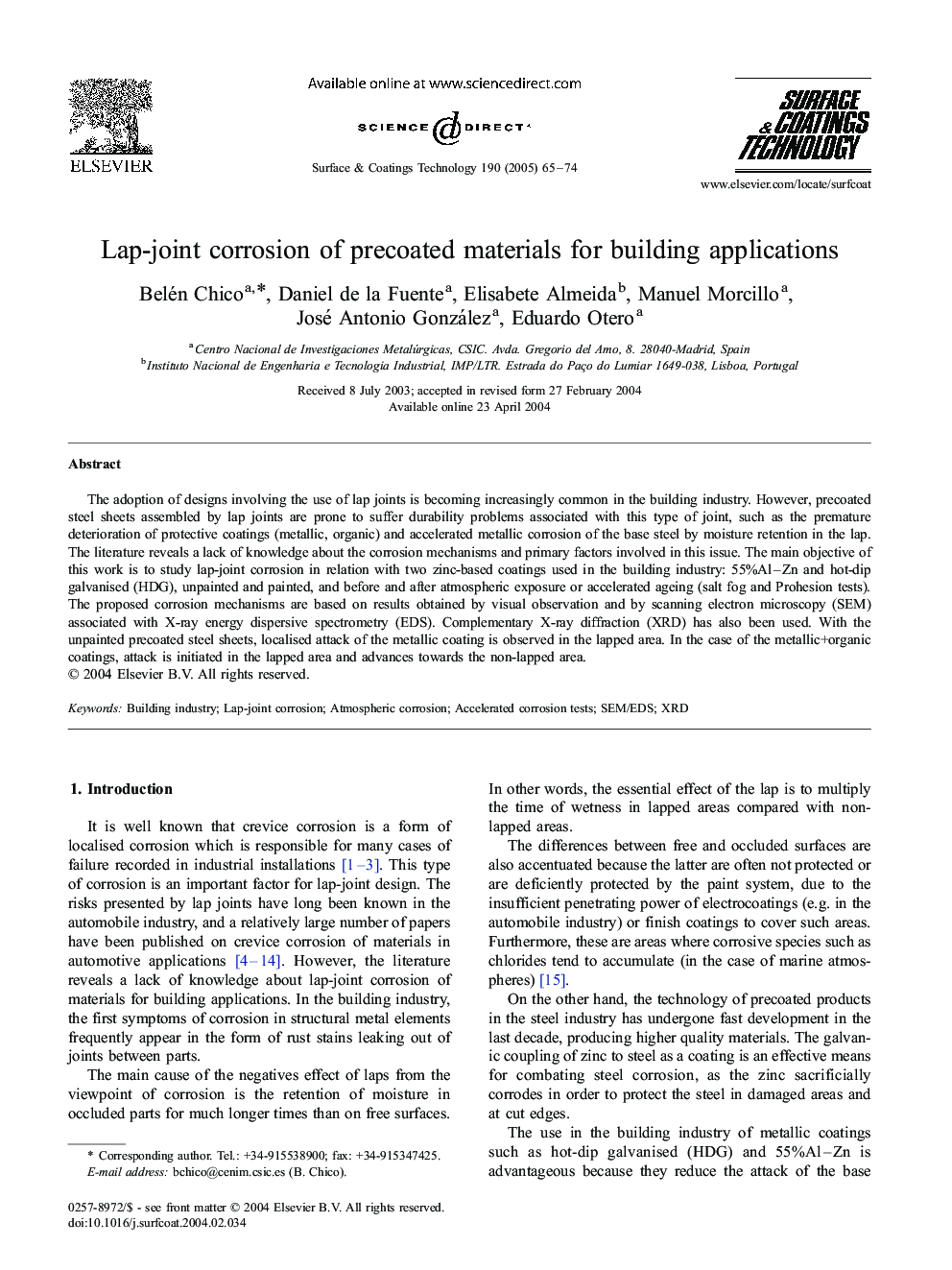| Article ID | Journal | Published Year | Pages | File Type |
|---|---|---|---|---|
| 10668810 | Surface and Coatings Technology | 2005 | 10 Pages |
Abstract
The adoption of designs involving the use of lap joints is becoming increasingly common in the building industry. However, precoated steel sheets assembled by lap joints are prone to suffer durability problems associated with this type of joint, such as the premature deterioration of protective coatings (metallic, organic) and accelerated metallic corrosion of the base steel by moisture retention in the lap. The literature reveals a lack of knowledge about the corrosion mechanisms and primary factors involved in this issue. The main objective of this work is to study lap-joint corrosion in relation with two zinc-based coatings used in the building industry: 55%Al-Zn and hot-dip galvanised (HDG), unpainted and painted, and before and after atmospheric exposure or accelerated ageing (salt fog and Prohesion tests). The proposed corrosion mechanisms are based on results obtained by visual observation and by scanning electron microscopy (SEM) associated with X-ray energy dispersive spectrometry (EDS). Complementary X-ray diffraction (XRD) has also been used. With the unpainted precoated steel sheets, localised attack of the metallic coating is observed in the lapped area. In the case of the metallic+organic coatings, attack is initiated in the lapped area and advances towards the non-lapped area.
Related Topics
Physical Sciences and Engineering
Materials Science
Nanotechnology
Authors
Belén Chico, Daniel de la Fuente, Elisabete Almeida, Manuel Morcillo, José Antonio González, Eduardo Otero,
